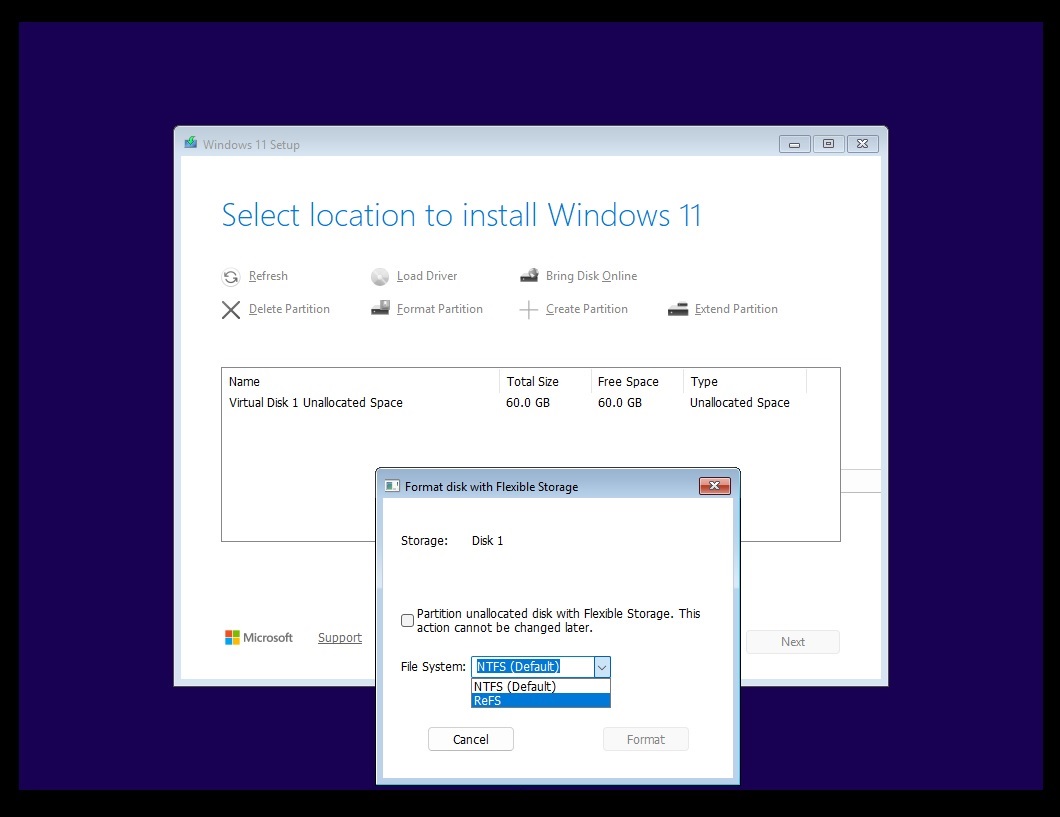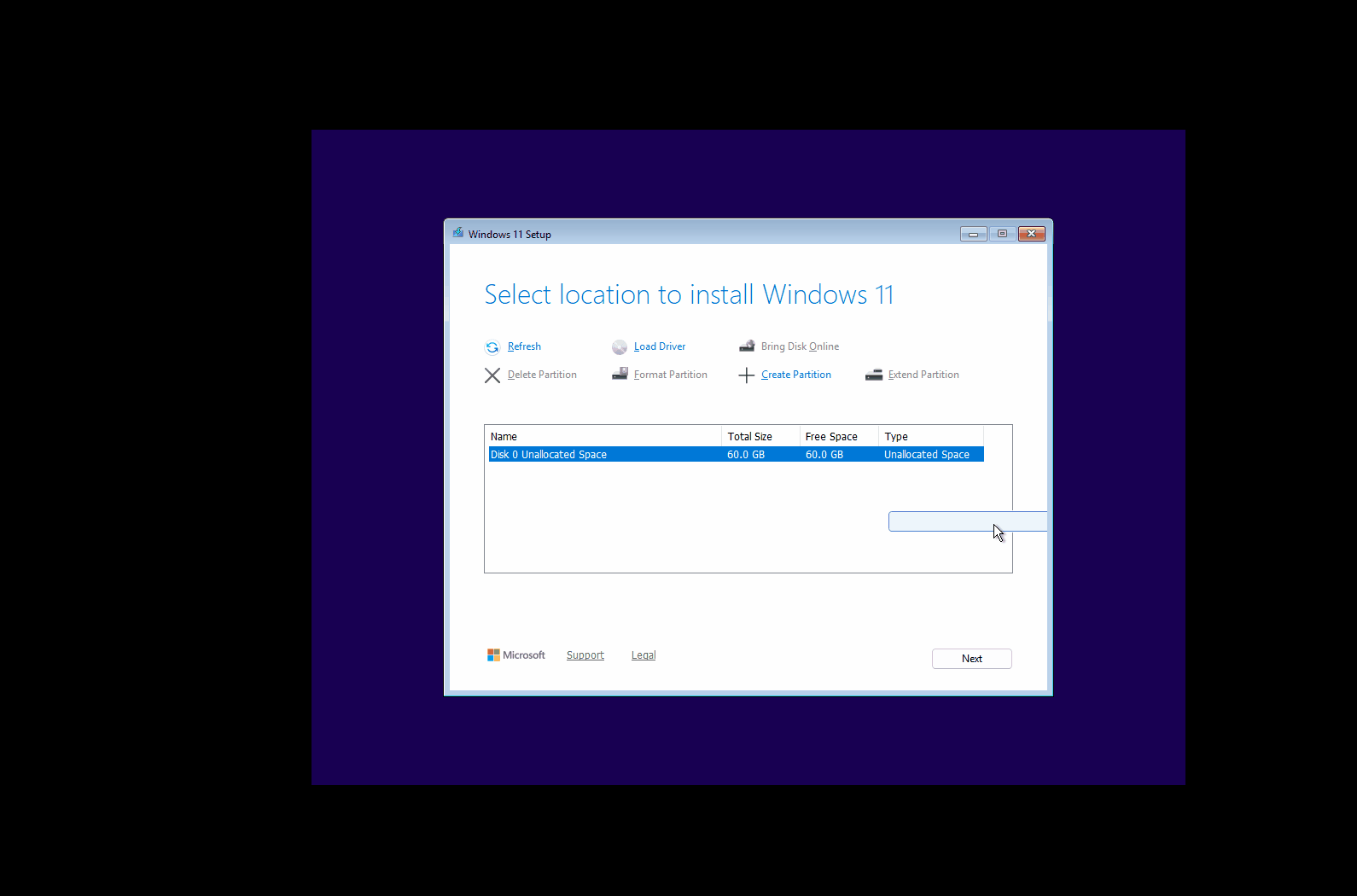Windows 11 is testing new storage configurations to install the operating system beyond the default NTFS option. Based on changes seen in newer builds, it looks like Windows Setup will allow you to choose between NTFS (the default) and ReFS, the modern file format.
When you clean install Windows using an ISO file (then opening the setup.exe) or directly booting using a USB, you’ll land on a “Windows Setup” screen, which has a blue background and an installation wizard in a small window. On this screen, you can choose your region, language, enter the product key, and also select the storage partition.
By default, Windows installations are locked to NTFS filesystem, whether you want it or not, and Microsoft doesn’t let you change it during the Windows Setup screen. However, it’s no longer the case in newer preview builds, at least according to what we’re seeing in Windows 11 Build 27823 (Canary).
As pointed out by Phantom on X, Windows 11 Build 27823 comes with undocumented Windows Setup improvements.

In our tests, Windows Latest observed that the setup wizard has a hidden toggle that lets you decide whether to install Windows on an NTFS-formatted drive or ReFS.
For those unaware, ReFS is a newer filesystem with faster performance, support for larger maximum sizes, and better data integrity. It’s better than NTFS in every possible way, but it’s not used as the default installation format for Windows 11.
While Windows 11 does support ReFS as a filesystem, it’s not possible to use it as the boot partition when you’re using an unmodified Windows Setup. Right now, you’ll have to install Windows on an NTFS partition, then boot into Windows, and finally manually set up ReFS on another storage drive/partition.
We tried installing Windows on the ReFS partition using Windows Setup, but it doesn’t work yet

I tried selecting “ReFS” when installing Windows 11 on my unallocated storage, but it didn’t work, and Windows setup returned an error message.
At the moment, only two options are offered, but the reference to “flexible storage” hints at configurations beyond NTFS and ReFS.
ReFS support is a part of the “Flexible Storage” feature. This is where things get interesting because Flexible Storage reference does not necessarily mean “just ReFS”.
It’s quite possible that the term Flexible Storage points to a broader rethinking of storage management in Windows 11.
It’s possible Microsoft is exploring Storage Pool (Spaces) support for installing the operating system. It’s worth noting that I’m simply speculating here because it’s not specifically mentioned in the newer preview builds, but it’s a possibility that cannot be ruled out.
Windows has always supported storage pools, but they aren’t used when installing the operating system on a partition.
The post Windows 11 Setup will let you choose between NTFS and ReFS when clean installing appeared first on Windows Latest
